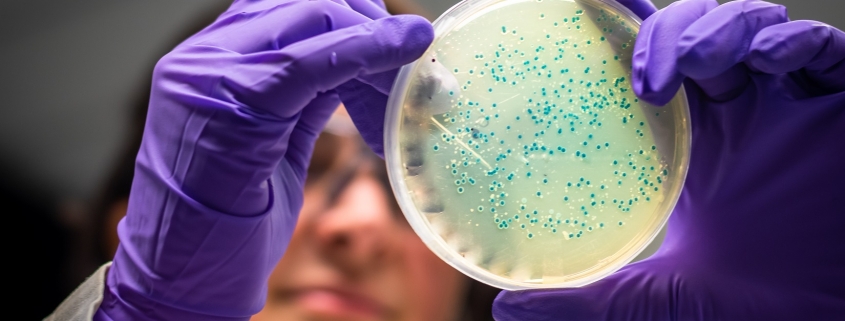Listeria and ToBRFV in the fruit and vegetable trade
Listeria and ToBRFV are hot topics for growers, suppliers and the AGF trade alike. Michel Witmer, Product Manager at Groen Agro Control, is happy to tell you more about it based on his experience with the Fruit & Vegetables trade and food sector.
Although Michel does not have direct contact with growers, the crates have to be cleaned properly to remove bacteria or viruses, for example. Groen Agro Control advises on this based on the PCR tests they perform.
“There are companies that clean professionally for third parties. They have to clean and, at the request of their customers, validate the absence of certain micro-organisms, usually viruses. What we do is periodically or upon request sample crates. There are not just one or two, but dozens of them.
If virus particles are found, then you know that the cleaning is not good and that adjustments must be made to the process. At the request of the customer, Groen Agro Control tests for the presence of viruses and they can also reveal any imperfections in the cleaning process.
Michel has no direct contact with growers’ organisations, but he is certainly not unfamiliar with the world of crate washers. In the past, he regularly visited companies in the food industry to check the crate washers for dosage of cleaning agents and disinfectants. The hygiene of the machine was also checked and discussed with the clients.
Washbasin
ToBRFV is a persistent virus, Michel has noticed. “You would think, that bit of DNA, some hot water over it and you’re done, but it’s not like that. It’s a matter of finding the ideal combination of various factors: chemistry, temperature, time and concentration of the agent.” In other words, the Circle of Sinner must be complete.
Michel explains how this works using a recognisable example. “Think of the old-fashioned washing-up bowl. You put a drop of Dreft in it, hot water, a dirty plate and a washing-up brush. You can’t get the grease off with cold water. So you either have to scrub harder or wash longer to get the dirt off the plate. If you raise the temperature, you don’t have to scrub as hard and you’re done faster. So in that way you actually have to validate your cleaning process.”
The ToBRFV puzzle
The tomato virus has been on everyone’s mind for over a year now. ToBRFV is making headlines in various parts of the world. “There are still many countries in and outside Europe that are suffering from it,” points out Michel. How should we solve the puzzle?
“Very good hygiene at the grower’s is important, and they have to keep a close eye on the germination material they start with. The tricky thing is that it cannot be seen.”
A possible solution is to develop resistant germination material, but even that does not offer 100 per cent certainty. “You can always get new viruses with modifications and other properties. Just look at COVID, which now also has an English and South African variant. Who says that’s not possible with other viruses?” So hygiene is the crux.
And how do you prevent Listeria?
Michel’s help is also regularly requested in preventing Listeria infections. Listeria is a very common microorganism. “Because it can make people sick, it’s important that it’s not present in the end product.
Sometimes companies have a positive result, without knowing where exactly it comes from. Then Michel can come along for advice. The whole process is checked to look for problem cases.
The problem with Listeria is that it is a persistent micro-organism. “At a temperature of between zero and five degrees, it can still grow. That is a temperature at which other bacteria cannot grow. So you have to pay extra attention to cold spots and places where condensation forms.” If you work in production every day, you sometimes fail to see the problematic spots, such as conveyor belts, yourself. Michel can help with an extra pair of eyes.
He makes an inventory of the production process and then advises a company on what it can do to clean it. A layer of biofilm on a pipe, for example, is an excellent breeding ground for Listeria. “It’s comfortable there and can grow in the meantime. If Listeria does get into the product through water or condensation, you can come across another contamination in the microbiological analyses of your end product. It’s like a raisin infection – it’s not distributed homogeneously.”
With Michel’s help, a company can pick out those unwanted currants. “That’s what I like to do: make customers happy by solving problems.”
For more information please contact Michel Witmer, Groen Agro Control, Distributieweg 1 – 2645 EG Delfgauw, phone 015 2572511
Date of publication: Fri 5 Feb 2021
Author: Annet Breure
© AGF.nl
Photography: Martin van der Marel


